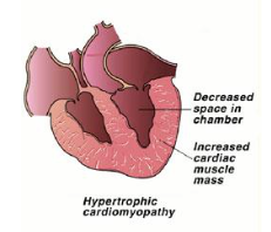The thyroid glands are located in the neck and play a vital role in regulating thebody’s metabolic rate. Hyperthyroidism is a disorder characterized by the overproduction of thyroid hormone and a subsequent increase in metabolic rate. The thyroid gland enlarges with hyperthyroidism, however this is generally a benign or non-malignant change. Less than 2% of hyperthyroid cases involve malignant thyroid gland tumors.
What causes hyperthyroidism?
Older cats are at increased risk for developing hyperthyroidism. Environmental and dietary risk factors have been investigated but there has been no correlation identified. No individual breed is known to be at increased risk, although the Siamese appears to have a somewhat increased incidence of hyperthyroidism compared to other breeds.
What are the clinical signs of hyperthyroidism?
Cats with hyperthyroidism are usually middle-aged or older. The average age of affected cats is approximately twelve years. The most common clinical sign of hyperthyroidism is weight loss secondary to the increased rate of metabolism. The cat tries to compensate for this with an increased appetite. Despite the increased food intake, most cats continue to lose weight. Affected cats often have increased water consumption and urination, as well as intermittent vomiting or diarrhea. Their fur may appear unkempt due to decreased grooming.
There are two secondary complications of hyperthyroidism that can be significant. These include hypertension (high blood pressure) and heart disease called thyrotoxic cardiomyopathy.
Heart problems develop because the heart must enlarge and thicken to meet the increased metabolic demands. In some cases, the cat will develop a heart murmur associated with the cardiomyopathy. Hypertension develops due to the increased pumping pressure and elevated heart rate that occurs with thyrotoxic cardiomyopathy.
Both cardiomyopathy and hypertension are potentially reversible with appropriate treatment of hyperthyroidism.
Hyperthyroidism also plays a role in kidney function. Uncontrolled hyperthyroidism increases the blood flow to the kidneys, which can mask underlying kidney disease. Kidney function needs to be closely monitored, especially during initial treatment of hyperthyroidism, to find appropriate balance between management of hyperthyroidism and kidney function.
How is hyperthyroidism diagnosed?
In most instances, diagnosis of this disease is relatively straightforward. The first step is to determine the level of one of the thyroid hormones, called total thyroxine (TT4). Generally, the TT4 level is so high that there is no question as to the diagnosis. Occasionally, a cat that is suspected of having hyperthyroidism has a TT4 level within the upper range of normal. When this occurs, a second test, usually a free T4, is performed.
What is the prognosis for hyperthyroidism?
The outcome of treatment for hyperthyroidism is usually excellent and most cats have a very good chance of returning to a normal state of health.
How is hyperthyroidism treated?
Treatment of hyperthyroidism is usually very successful. Tests are needed to evaluate the overall health and help predict the chances for any treatment complications. Such tests include bloodwork, urinalysis, and blood pressure – often these have already been performed as part of original testing. Additional diagnostics may include chest radiographs and ECG to further evaluate the heart.
Methimazole oral or transdermal medication.
- Methimazole blocks the production of excess thyroid hormone and is a life-long medication.
- It is available in an oral tablet called Felimazole at our hospital. It can also be prescribed in liquid form at specific pharmacies.
- For cats that are a challenge to administer oral medication, methimazole can be compounded into a transdermal gel that is applied to the skin on the inner aspect of the ear for absorption.
- Regular blood screening and blood pressure monitoring are needed to assess disease control.
- Potential side effects of oral methimazole include vomiting and/or diarrhea, facial scratching/excoriation, and in very rare instances bone marrow suppression. If present, other treatment options should be pursued.
Radioactive iodine. A very effective way to treat hyperthyroidism is with radioactive iodine (I 131).
- An injection of radioactive iodine is given intravenously and it destroys the abnormal thyroid tissue without endangering other organs.
- 95% of cats require no further treatment for hyperthyroidism after radioactive iodine treatment.
- Treatment requires 2-3 days of hospitalization at a veterinary hospital licensed to administer radiation therapy – the closest in our area is UW Veterinary Care in Madison. Approximate cost is $1500.
- There is more upfront cost with this treatment, but often is most cost effective in long-term due to no need for continued medication.
Hill’s y/d diet.
- For cats that do not tolerate methimazole or other treatment options, Hill’s y/d diet is an alternative treatment option.
- Hill’s y/d very tightly limits iodine intake to control thyroid hormone (T4) production. When fed, it is the sole treatment used – the diet is not used in combination with methimazole or radioactive iodine.
- Routine blood screening and blood pressure monitoring is needed for proper disease management.
- It is not ideal for multi-cat households or indoor/outdoor cats.
We will work together to find the best treatment for your cat’s hyperthyroidism. Please contact us with any questions or concerns regarding this information.

